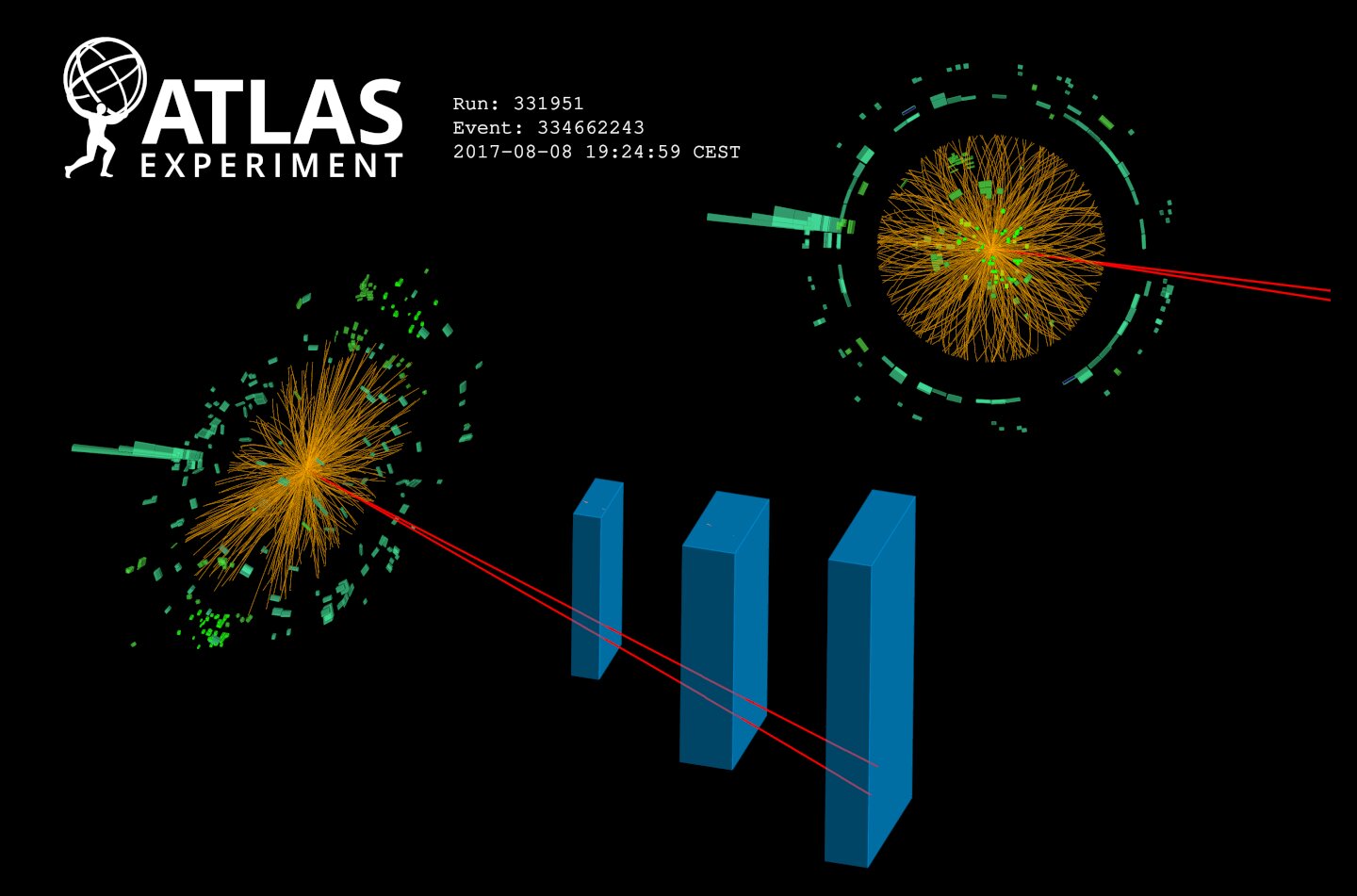Scientists find first evidence of rare Higgs boson decay
This work provides evidence for something scientists predicted long ago.

Scientists have spotted the first evidence of a rare Higgs boson decay, expanding our understanding of the strange quantum universe.
In 2012, the Nobel Prize in Physics was awarded to a breakthrough finding: the detection of the Higgs boson, a subatomic particle predicted by the Standard Model of physics nearly 50 years prior. The Higgs boson doesn't live very long, quickly decaying into less massive particles like two photons (light particles).
Now, researchers using ATLAS and CMS at CERN's Large Hadron Collider in Switzerland have found evidence for a rare Higgs boson decay in which the subatomic particle decays into one photon and two leptons, a type of elementary particle that can be charged or neutral. (Electrons and muons, a similar type of subatomic particle, are two examples of charged leptons.) Specifically, they found evidence that the Higgs boson can decay into either a photon and a pair of electrons, or a photon and a pair of muons with opposite charge.
Related: Top 5 implications of the Higgs boson discovery
Space.com Collection: $26.99 at Magazines Direct
Get ready to explore the wonders of our incredible universe! The "Space.com Collection" is packed with amazing astronomy, incredible discoveries and the latest missions from space agencies around the world. From distant galaxies to the planets, moons and asteroids of our own solar system, you’ll discover a wealth of facts about the cosmos, and learn about the new technologies, telescopes and rockets in development that will reveal even more of its secrets.
Using the Standard Model, scientists are able to predict the different elementary particles that the Higgs boson can decay into, with a fairly "common" decay being two photons. They can also estimate how often the Higgs boson decays into different combinations of particles, and it is particularly rare for the Higgs boson to decay into a photon and two leptons.
In this type of decay, after its uber-short life, the Higgs boson quickly turns into one photon and what scientists call a "virtual photon." That "virtual photon," also known as an "off-shell photon" then immediately turns into something like, in this case, two leptons. This "virtual photon," has a very small non-zero mass, while regular photons are completely massless, James Beacham, a particle physicist with the ATLAS experiment at the LHC, told Space.com.

The two leptons "hit our calorimeter really close to each other," Beacham added. The LHC's calorimeter is a tool that stops particles coming from a particle collision. Scientists can spot and study these particles when they're stopped or "absorbed" by the tool.
Sign up for the Live Science daily newsletter now
Get the world’s most fascinating discoveries delivered straight to your inbox.
While scientists have predicted that this type of decay should exist with the Higgs boson, this new detection is "the first hint of evidence of this very rare decay mode of the Higgs boson," Beacham said.
However, he added, the team likely won't be able to directly observe the rare decay until they upgrade the facilities for the upcoming High-Luminosity LHC program (which will come following the LHC Run 3. The data used for this study was collected during Run 2, the second running period for the collider that began in 2015 and ended in 2018. Run 3 will begin in March, 2022.)
"With vast amounts of data expected from the High-Luminosity LHC programme, studying rare Higgs boson decays will become the new norm," according to a statement from ATLAS.
By studying rare decays like this, researchers can explore the possibility of new physics that stretches beyond the Standard Model. The Standard Model explains a lot of things about our physical universe, but it doesn't include gravity or dark matter, Beacham said. Dark matter, which emits no light and cannot be directly observed, is thought to make up about 80% of all matter in the known universe, but scientists do not yet know exactly what it is.
"We're always looking for extensions to the Standard Model," he said. "We have to find a window or a portal from our world into this dark sector world and play experimentally. And one of these could be the Higgs boson." Beacham explained that the "dark sector" encompasses physics that extends beyond the Standard Model.
Now, don't get too excited. This paper "does not give us new information yet about the Higgs portal into the 'dark sector,'" Beacham said. But "this paper proves that we can look for very rare things like this, quite handily," he said, which pushes the search forward overall.
This work was presented at a public LHC seminar at CERN Feb. 1 and you can see it on CERN's website. The document published by CERN is a CONF note, which is an ATLAS preliminary result.
Email Chelsea Gohd at cgohd@space.com or follow her on Twitter @chelsea_gohd. Follow us on Twitter @Spacedotcom and on Facebook.
Chelsea Gohd joined Space.com as an intern in the summer of 2018 and returned as a Staff Writer in 2019. After receiving a B.S. in Public Health, she worked as a science communicator at the American Museum of Natural History. Chelsea has written for publications including Scientific American, Discover Magazine Blog, Astronomy Magazine, Live Science, All That is Interesting, AMNH Microbe Mondays blog, The Daily Targum and Roaring Earth. When not writing, reading or following the latest space and science discoveries, Chelsea is writing music, singing, playing guitar and performing with her band Foxanne (@foxannemusic). You can follow her on Twitter @chelsea_gohd.











